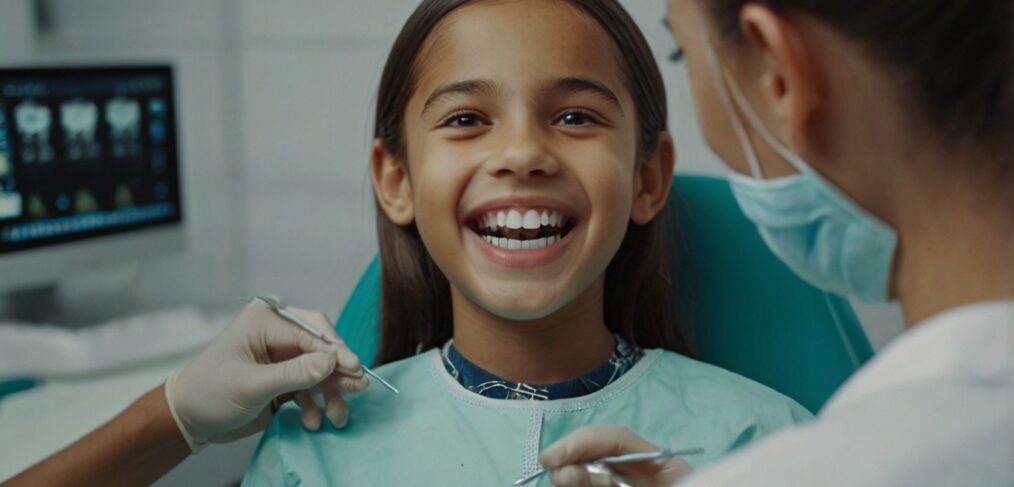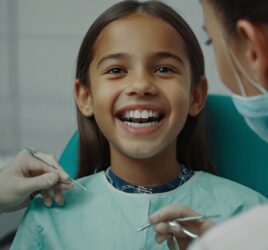
What is the Right Age to Start Orthodontic Treatment? Top 5 Reasons to Start Early
What is the Right Age to Start Orthodontic Treatment? Learn the ideal age to start orthodontic treatment, with pros and cons for every stage.- Bee Cave Orthodontics – Austin, Texas
As a parent, deciding when your child should begin orthodontic treatment can be a big question. You may be wondering: “Is now too early? Should we wait until their teen years?” The truth is, there is no one-size-fits-all answer — but understanding the benefits and challenges of starting treatment at different ages can help you make the best decision.
Here’s what you need to know about the ideal age to start braces or Invisalign, and how each stage of development affects orthodontic care.
1. Ages 6–9: Early Intervention (Phase 1 Orthodontics)
What happens at this stage?
This is the perfect age for your child’s first orthodontic evaluation. According to the American Association of Orthodontists, children should see an orthodontist by age 7. Why? Because their jaw is still developing and it’s easier to guide their growth.
Braces & Invisalign at this age:
-
Braces: Used in some cases for crossbites, crowding, or protruding teeth.
-
Invisalign First: A specially designed clear aligner system for younger children with mixed dentition.
✅ Pros:
-
Can prevent more serious problems later.
-
Shorter and less invasive treatment in the future.
-
Boosts confidence early on.
⛔️ Cons:
-
May require a second round of treatment later.
-
Some kids may not be emotionally ready for daily care routines (especially with Invisalign).
2. Ages 10–12: Pre-Teen Years
What’s happening?
Most permanent teeth are in place or erupting. This is a prime age for interceptive treatment if problems weren’t caught earlier.
Braces & Invisalign at this age:
-
Braces are common for alignment and bite issues.
-
Invisalign is available, especially if the child is responsible enough to wear aligners consistently.
✅ Pros:
-
Easier to make changes while growth is ongoing.
-
Social acceptance — many kids get braces at this age.
⛔️ Cons:
-
Still might need longer treatment depending on growth patterns.
-
Invisalign may be harder to maintain for some kids.
3. Ages 13–15: Teen Years
Why is this age so common?
By this age, most or all adult teeth have erupted, and the jaw has developed significantly. It’s the most typical time to start full orthodontic treatment.
Braces & Invisalign:
-
Both are very effective at this stage.
-
Teens are often great candidates for Invisalign Teen (includes features like eruption tabs and wear indicators).
✅ Pros:
-
Predictable treatment outcomes.
-
Teens are usually more responsible with hygiene and follow-ups.
-
Invisalign often preferred for aesthetic reasons at this age.
⛔️ Cons:
-
Teens may be self-conscious about appearance with braces.
-
Can interfere with sports/musical instruments if not managed properly.
4. Ages 16+: Late Teens
Still possible to start? Absolutely.
Orthodontic treatment can still be very effective in later teenage years. It may take longer if growth is complete, but great results are still achievable.
✅ Pros:
-
High compliance — teens understand the benefits.
-
Invisalign is often the preferred choice for its subtle look.
⛔️ Cons:
-
May require more complex treatment if issues were left unaddressed for years.
-
Slightly less flexibility in guiding jaw development.
So, What’s the Ideal Age?
In most cases, ages 7–8 is the ideal time for a first orthodontic evaluation — not necessarily for starting treatment, but to assess if early intervention could help. If no issues are found, your orthodontist will continue monitoring growth and development.
Starting early doesn’t always mean treatment begins immediately — but catching potential problems early can lead to simpler, faster, and more cost-effective solutions later.
Braces vs. Invisalign: What Should You Choose?
Both are excellent options, and the best choice depends on your child’s:
-
Age and stage of dental development
-
Responsibility and ability to follow care instructions
-
Lifestyle and confidence needs
Invisalign offers flexibility and discretion, while braces are more durable and often better for complex cases.
Schedule a Free Consultation Today!
The earlier you check in with an orthodontist, the better your chances of ensuring a smooth, confident smile journey for your child or teen. At [Clinic Name], Dr. D is a trusted expert in both traditional braces and Invisalign — especially for children and teens with unique needs.
📅 Ready to find out if now is the right time for your child’s treatment?
👉Schedule a Free Consultation with Dr. D now and take the first step in giving your child a strong, confident smile!
Want to get to know us a little better? Check out our YouTube Videos!



